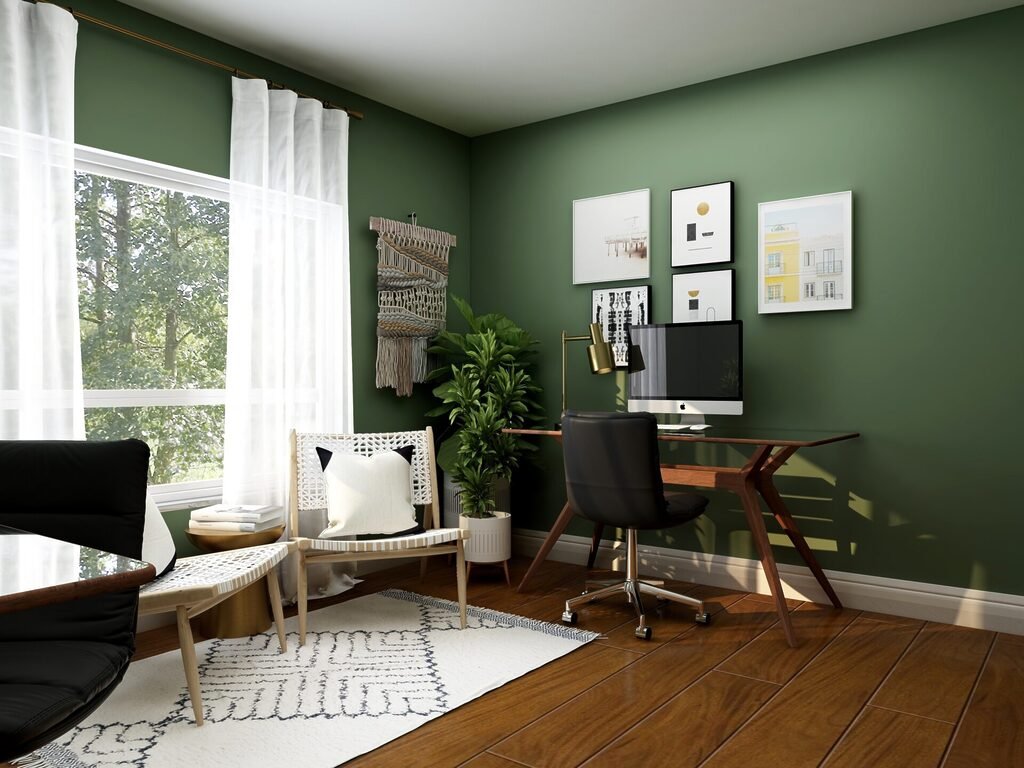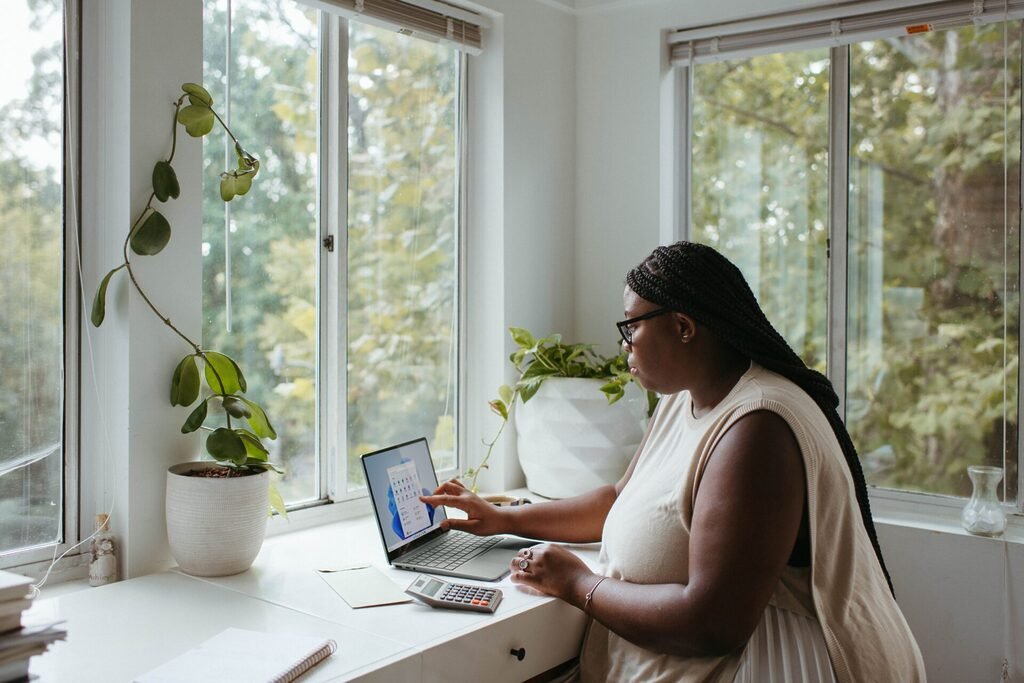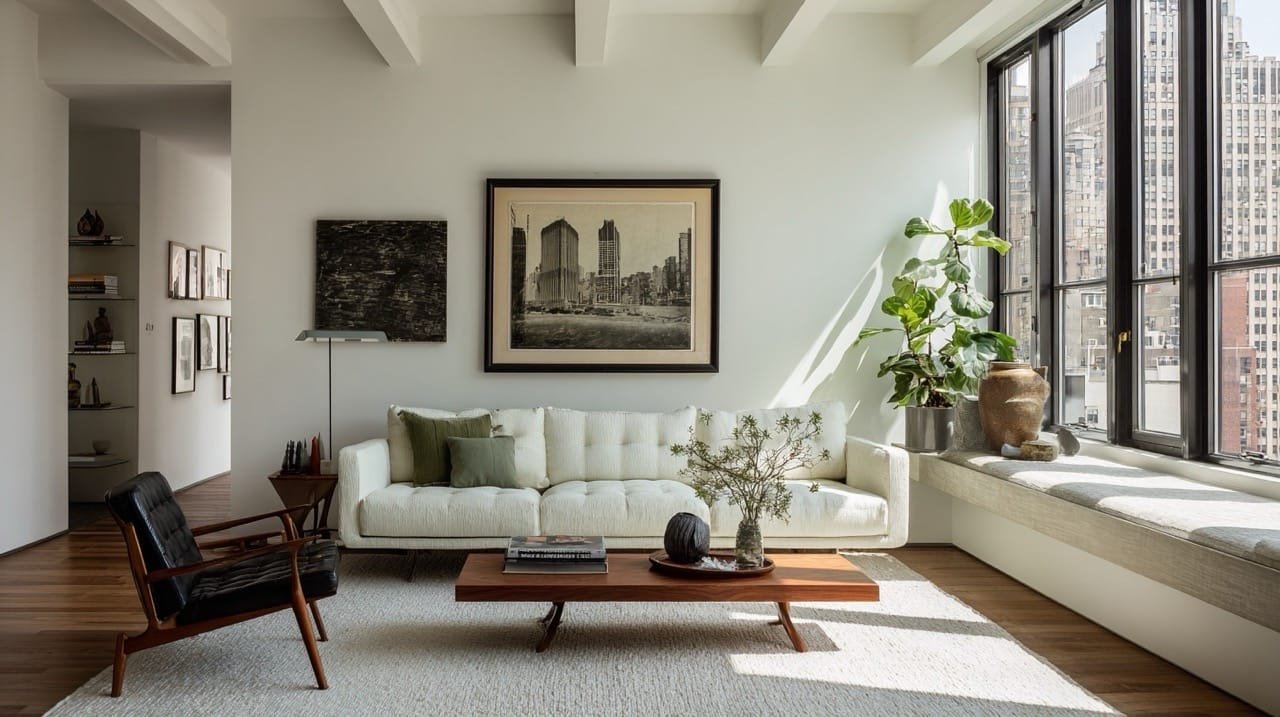In less than three years, we’ve experienced a massive shift in the way we work, with many people finding themselves working remotely for the first time. While working from home has its perks, such as the ability to avoid long commutes and more flexibility with your schedule, it also presents its own set of challenges. For many folks, it can be tricky setting up a workspace that is both functional and comfortable. Enter these 10 essential tips for setting up your first home office.
Whether you’re working from home full-time or just occasionally, being comfortable and focused is essential for staying productive and motivated. In this blog post, we’ll cover 10 home office setup tips geared to those joining the #wfh force for the first time and seeking some best practices.
Table of Contents
Choose the Right Space
One of the most essential tips for setting up your first home office is to create a dedicated workspace. This means finding a room or area of your home that you can ideally use exclusively for work. This might be a spare bedroom, a corner of the living room, or even a converted closet. The key is to separate your work and personal spaces as much as possible to reduce distractions and help you focus.

Make sure the space is free of clutter, has some natural light and is quiet enough for you to focus. Declutter the area and keep only the essential items that you need at your workspace, such as your computer, notes or other office materials.
If you have room, delegate an area such as a drawer or cubby for reference materials and other documents you don’t need to access on a daily basis.
Let There Be Light
You want to make sure you have enough room to comfortably do your work, and that it’s well-lit and free of distractions like TVs and phones. Don’t underestimate the importance of lighting for your comfort. Working in a poorly lit room is a sure way to strain your eyes. Plus it can make you sleepy!
Natural light is essential for both physical and mental well-being. Setting up your workspace near a window to benefit from natural light also helps reduce eye strain caused by artificial lighting. If your workspace doesn’t have access to natural light, you might want to try using a light therapy lamp to mimic natural light and help regulate your body’s circadian rhythm.
Consider Ergonomics
Investing in the best ergonomic furniture your budget will allow is also vital if you really want to create a comfortable space you can be productive in. Ergonomic office furniture like adjustable chairs, desks, and footrests help support your body and minimise fatigue. In turn, this can greatly improve your focus.
Positioning your desk and chair correctly is essential for avoiding physical discomfort. Who doesn’t know the feeling of lower back pain or a sore bottom after sitting on a bad chair for hours? You want to avoid that!
Ideally, your chair has ample support for your back and shoulders, with adjustable height and tilt settings. Check if your monitor is at a good level for your height. Your neck shouldn’t feel strained from looking too far down.

You might want to opt for a standing desk or one with an adjustable height to keep a good posture while working. Whether you stand or sit though, make sure that your desk is at a comfortable height for your frame. You don’t want to be hunching over or having to stretch to reach your keyboard.
Invest in the Right Equipment
When creating your workspace at home, it’s important to take into account not only style and comfort, but also any technical needs you have. It’s obviously essential to ensure you have a reliable wifi connection and easy access to outlets for your electronics.
If you’re self-employed, you’ll want to keep your hardware up to standard, too. At the bare minimum, invest in a good computer that suits your working realm, and in a large screen. Working from a tablet is a good emergency option to have when you need one, but it’s not a comfortable or sustainable setup for daily work.
Full-time employees will often get an allowance from their employer to set themselves up at home. Make sure to use it if you have that option!
Taking the time to select the best items within your budget will give you a great return on your investment. Combining an ergonomic setup that feels good to you with sensible hardware choices helps prevent future aches and pains.
Reduce Distractions
Distractions can be detrimental to your productivity when you’re in your home office. It can take so long to get back into the flow when you’ve been interrupted!
If you have a family or if your partner or roommate also works from home, a great way to reduce distractions is to use noise-cancelling headphones. They block out background noise and help you focus better.
Additionally, setting boundaries with family members or roommates helps you avoid distraction. Let them know you don’t want to be disturbed at certain times.
Don’t forget about your own habits and tendencies either. If you know you get too easily sucked in by social media, as one example, turn your notifications off during work or use a website blocker on your computer.
Take Care of Yourself
Prioritising some degree of self-care is important when working from home, yet it’s so often overlooked. The boundaries between work and personal life can become blurred, making it easy to neglect your physical and mental health. Set aside some time each day for self-care micro-breaks such as a few minutes of stretching, meditation, or simply taking a proper coffee break in the fresh air. Taking regular breaks really can help you stay refreshed and focused throughout the day.
It’s also important to maintain a healthy work-life balance by setting a specific time to disconnect from work and return to your personal life. If you don’t have a dedicated room for your home office, it helps to simply put away your work laptop and tidy your desk at the end of the day. This way you won’t be reminded of work every time you walk by.
Have Some Organising Strategies
Once you have a dedicated workspace, keeping it organised and clutter-free will also benefit your daily productivity. Keeping it clear of personal items, bills, and dirty dishes is the first step. Using a designated storage system for your work utensils so you can easily find what you need, when you need it, is another good way to stay tidy.

To find the right storage solution for your space, think about the type of items you need to store currently, and allow yourself some flexibility for future items. If you’re getting new shelves for books, drawers to store office supplies, or a filing cabinet for important documents, make sure they have enough space to scale with your needs. You might also like to add some baskets, caddies, or wall or desk organisers to your setup.
Finally, establish a consistent routine for cleaning up at the end of each workday. Doing so is a sure way to prevent any clutter from piling up again and distracting you.
Maintain a Daily Schedule and Task List
A big challenge to working from home is maintaining a sense of structure and routine. One of the best tips for setting up your first home office is therefore to create a schedule and stick to it. Include your designated break times, regularly scheduled meetings and block out some quiet time so you can do some deep work, too.
Another caveat to working remotely from home is that you often forget to stop working. This can wreak havoc on your personal life and lead to burnout. So set yourself fixed working hours and make sure to close up shop on time at the end of your day. It’s not quiet quitting, it’s just healthy.
Finally, use a calendar and to-do list, either digital or paper, to stay on top of tasks that need to be done. You can organise your to-dos by day, week or month, or cluster them around your overarching goals. Reviewing your to-do list at the end of each day before you finish work helps make the following morning all the easier to settle into.
Stay Connected
Staying connected to other humans is essential when working from home, especially if you want to stay safe living alone. It can be a boon to your mental wellbeing to have a 1:1 with a peer over Zoom, pop into your team’s group chat before your lunch break, or just send a friend a text when you have a spare minute.

Mental health aside, collaboration and communication are inherently essential to working remotely, so it’s important to establish a process that works for your team. Regular check-ins, setting goals and deadlines, and sharing progress are all ways to stay in sync and ensure that everyone is on the same page. Collaboration tools like Miro and Trello or shared documents also help keep your team aligned.
Final Tips for Setting Up Your First Home Office: Stay Safe!
When you start working from home, you might be at a bigger risk for cyber threats than you would be at the office. Even if you don’t have a dedicated IT department, you can still mitigate potential security risks and take steps to protect yourself and your company’s data. Using a VPN is common practise, as is keeping your computer and software up-to-date, and being mindful of any links and attachments you open.
Check out my post with home office safety tips for best practices around cybersecurity and staying safe when working from home.
What Are Your Home Office Tips?
Working from home can be rewarding if you set yourself up for success from the start. With the right mindset and tools, you can make the most of your home office space and really enjoy your workday. Are you working remotely? Drop us a comment below with some tips for setting up your first home office.






Leave a Reply